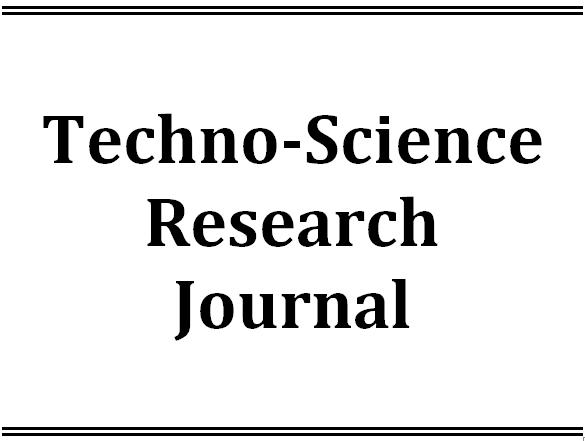Latest Issue
Empowering Education with Online Khmer Handwritten Text Recognition for Teaching and Learning Assistance
Published: August 30,2025Undergraduate Student Dropout Prediction with Class Balancing Techniques
Published: August 30,2025Status of Seawater Quality at Koh Rong Island, Sihanoukville, Cambodia
Published: August 30,2025Low-Complexity Detection of Primary Synchronization Signal for 5G New Radio Terrestrial Cellular System
Published: August 30,2025Word Spotting on Khmer Printed Documents
Published: August 30,2025Tuning Hyperparameters Learning Rate and Gamma in Gym Environment Inverted Pendulum
Published: August 30,2025Examining Passenger Loyalty in Phnom Penh Public Bus System: A Structural Equation Modelling Approach
Published: August 30,2025Prediction on Load model for future load profile of Electric Vehicle charging demand in Phnom Penh
Published: August 30,2025Economic Study on Integrating PV-DG with Grid-Tie: Case Study in Cambodia
Published: August 30,2025Numerical Analysis of Surface Chemical Species and NOx Reduction Improvement over a Fe-zeolite Catalyst in an NH3-SCR System on a Diesel Engine
-
1. Department of Industrial and Mechanical Engineering, Institute of Technology of Cambodia, Russian Federation Blvd., P.O. Box 86, Phnom Penh, Cambodia.
Academic Editor:
Received: June 01,2014 / Revised: / Accepted: June 08,2014 / Available online: June 27,2014
To fulfill the increasingly stringent emission regulations, several technologies have been developed in the past to eliminate pollutants from the exhaust gas of diesel-powered engines. Around this subject matter, a lot of research efforts have been put to find suitable catalytic systems and to understand the mechanistic backgrounds of chemical processes on the catalytic surface. One technology for NOx reduction in vehicles as well as in other combustion processes is to use Selective Catalytic Reduction which utilizes ammonia as reducing agent (NH3-SCR). The Fe-zeolite catalyst has been selected in this research study. However, NOx reduction of SCR system is significantly worse at low catalyst temperature. The experiments have been conducted to validate the numerical model at catalyst temperature 224 °C for further study which cannot be analyzed from the experimental results. This study thus aims at understanding the way enriching NOx
- + + - - conversion by analyzing SCR catalyst surface chemical species such as O2 , H , NH4 , NH4NO3, NO3 and NO2 at both during supplying and cutting off NH3 injection. The numerical analysis shows chemical reactions are much more active at upstream and upper layer than that at
downstream and lower layer of the catalyst. In addition, the NOx conversion is enhanced when the catalyst temperature rises accordingly.
This improvement of NOx reduction is attributed from fast chemical reaction rates when temperature is appropriately high. Remarkably, the NOx is still in a high conversion rate after immediately cutting NH3 supply for a quick period before recovering to the initial state due to the occurrence of NH4NO3 decomposition. Consequently, it can be concluded that supplying and cutting off NH3 for a while is efficient and helps improve the total NOx conversion efficiency.

